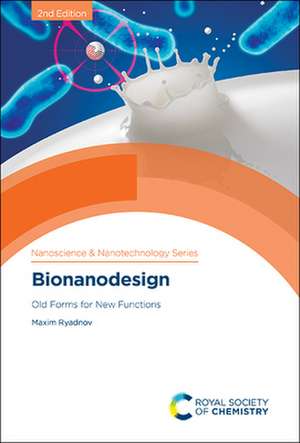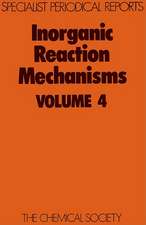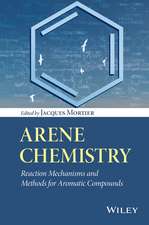Bionanodesign: Nanoscience & Nanotechnology Series
Autor Maxim Ryadnoven Limba Engleză Hardback – 10 dec 2021
Din seria Nanoscience & Nanotechnology Series
- 14%
 Preț: 1227.21 lei
Preț: 1227.21 lei - 14%
 Preț: 1128.47 lei
Preț: 1128.47 lei - 14%
 Preț: 1298.58 lei
Preț: 1298.58 lei - 14%
 Preț: 1529.22 lei
Preț: 1529.22 lei - 14%
 Preț: 1296.91 lei
Preț: 1296.91 lei - 14%
 Preț: 1298.58 lei
Preț: 1298.58 lei - 9%
 Preț: 1032.26 lei
Preț: 1032.26 lei - 9%
 Preț: 1243.23 lei
Preț: 1243.23 lei - 9%
 Preț: 1240.62 lei
Preț: 1240.62 lei - 9%
 Preț: 1239.09 lei
Preț: 1239.09 lei - 9%
 Preț: 1171.81 lei
Preț: 1171.81 lei - 9%
 Preț: 1169.86 lei
Preț: 1169.86 lei - 9%
 Preț: 1032.48 lei
Preț: 1032.48 lei - 9%
 Preț: 1240.18 lei
Preț: 1240.18 lei - 9%
 Preț: 1169.21 lei
Preț: 1169.21 lei
Preț: 1099.76 lei
Preț vechi: 1208.53 lei
-9% Nou
210.44€ • 220.16$ • 174.81£
Carte indisponibilă temporar
Specificații
ISBN-10: 1782628169
Pagini: 212
Dimensiuni: 160 x 236 x 18 mm
Greutate: 0.48 kg
Ediția:Nouă
Editura: RSC Publishing
Seria Nanoscience & Nanotechnology Series
Cuprins
Recenzii
Notă biografică
Textul de pe ultima copertă
Nanotechnology is often referred to as building nanoscale structures from bottom up. However, while it is visually clear what is at "up" little is given and understood what is at the "bottom." This new book gives the notion of and provides rules for building nanostructures from basics - the very bottom. The main objective of this publication is to bring together contemporary approaches for designing nanostructures that employ naturally derived self-assembling motifs as synthetic platforms.
The book has been written to satisfy the demands that motivate the search for and principles that prove to help the design of novel nanostructures. The overall goal is to compile the existing understanding of rules that govern biomolecular self-assembly into a practical guide to molecular nanotechnology. It is written in the shape of a review referenced as fully as permissible within the context of biomolecular design, which forms a general trend throughout.
The volume is composed of three core chapters focusing on three prominent topics of applied nanotechnology where the role of nanodesign is predominant. The three key areas from which popular highlights can be drawn are:
-employing the genetic repository, DNA, for creating various geometric nanoscale objects and patterns
-the empirical pursuit of an artificial virus, a magic bullet in gene therapy
-designing artificial extracellular matrices for regenerative medicine
Specific applications that arise from designed nanoscale assemblies as well as fabrication and characterization techniques are of secondary importance and whenever they appear serve as progress and innovation highlights.
The book takes an unconventional approach in delivering material of this kind. It does not lead straight to applications or methods as most nanotechnology works tend to do, but instead it focuses on the initial and primary aspect of "nano" rather than on "technology." Nanodesign is unique in its own field - illustrations are essential and the cohort of brilliant bioinspired designs reported to date form a major part of the publication. In addition, key bibliographic references are covered as fully as possible. A special appendix giving a short list of leading world laboratories engaged in bioinspired nanodesign is also included.










